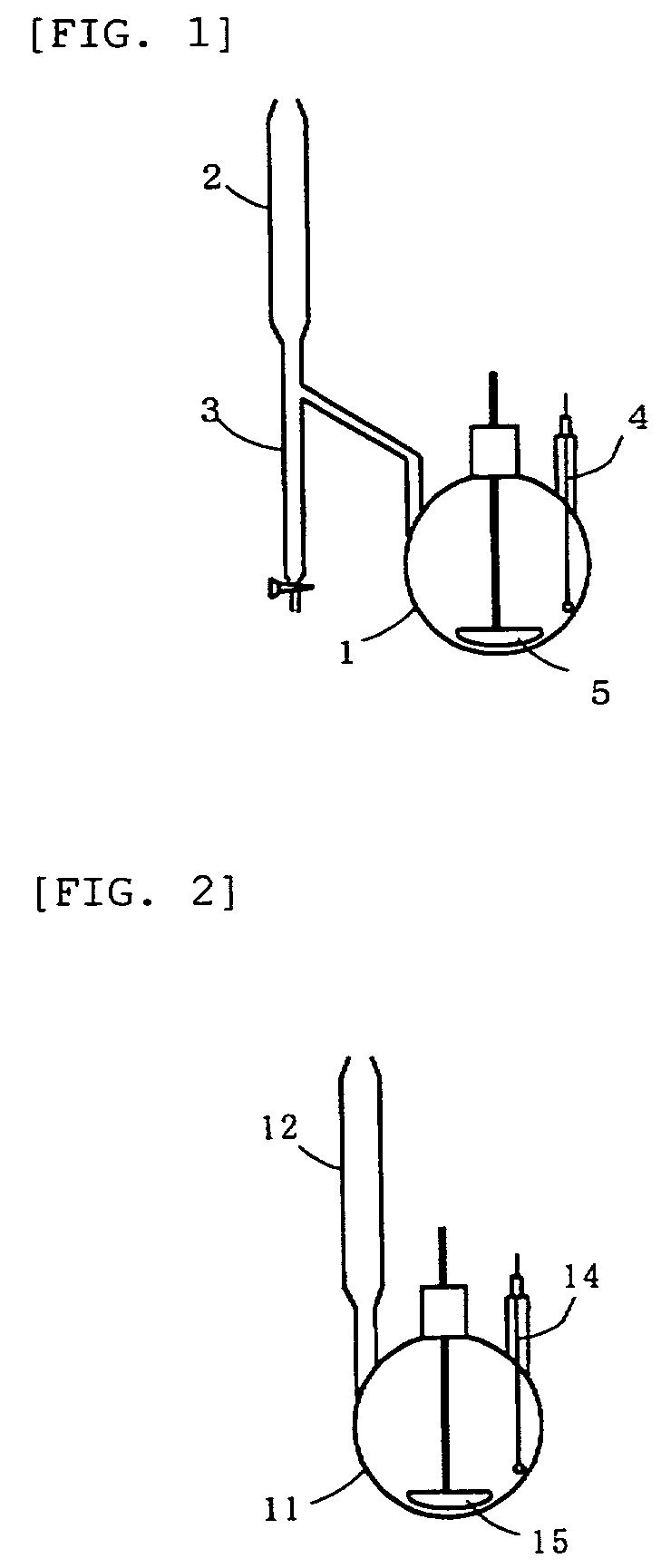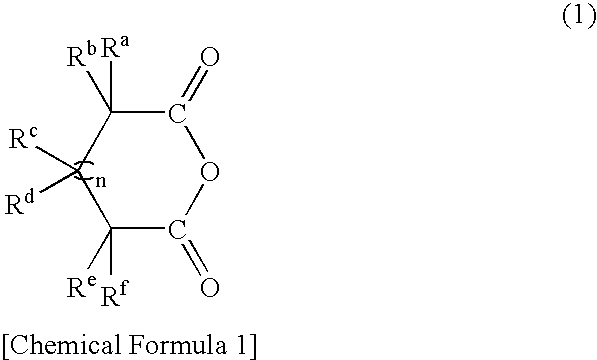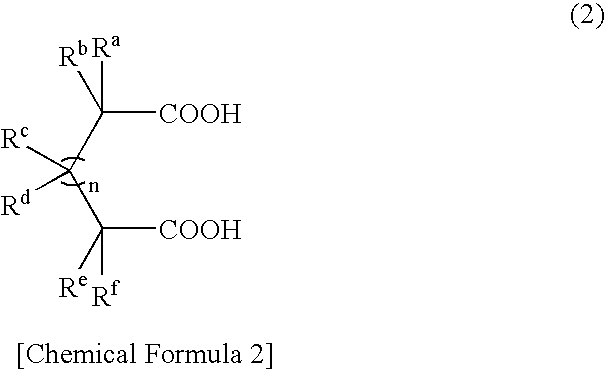Process for producing cyclic N-hydroxy imide compounds
a technology of cyclic n-hydroxyimide and compound, applied in the field of process for producing cyclic n-hydroxyimide compound, can solve the problems of low utilization rate of cyclic acid anhydride, low yield of cyclic n-hydroxyimide compound, and inability to say industrially satisfactory processes, etc., to achieve significant improvement of utilization rate of raw material components.
- Summary
- Abstract
- Description
- Claims
- Application Information
AI Technical Summary
Benefits of technology
Problems solved by technology
Method used
Image
Examples
example 1
[0077]In a 300-ml three-necked flask equipped with a Dean-Stark fractionating unit having an inner capacity of 20 ml and having a reflux condenser on its top, a thermometer, and a Teflon (registered trademark) mixing impeller as illustrated in FIG. 1 were placed 13.0 g of hydroxylamine hydrochloride, 22.0 g of potassium carbonate, 50 g of acetic acid, and 3.0 g of cyclohexane, and the Dean-Stark fractionating unit was filled with cyclohexane. The temperature was held at 65° C. on an oil bath. One hour later, 17.71 g of succinic acid was added to the mixture in the flask, and the temperature of the oil bath was raised until reflux began in the reflux condenser mounted to the top of the Dean-Stark. Heating was terminated eight hours later. Water by-produced in the reaction underwent azeotropy with cyclohexane, and the distillate cooled in the reflux condenser was separated into two layers, i.e., an organic layer and an aqueous layer in the Dean-Stark fractionating unit. The organic la...
example 2
[0079]In a 300-ml three-necked flask equipped with a Dean-Stark fractionating unit having an inner capacity of 20 ml and having a reflux condenser on its top, a thermometer, and a Teflon (registered trademark) mixing impeller as illustrated in FIG. 1 were placed 37.41 g of a 50 percent by weight aqueous hydroxylamine solution, 150 g of acetic acid, 2.4 g of cyclohexane, and 53.1 g of succinic acid, and the Dean-Stark fractionating unit was filled with cyclohexane. The temperature of the oil bath was raised until reflux began in the reflux condenser mounted to the Dean-Stark. Heating was terminated six hours later. Water in the aqueous hydroxylamine solution and water by-produced as a result of the reaction under went azeotropy with cyclohexane, and the distillate cooled in the reflux condenser was separated into two layers, i.e., an organic layer and an aqueous layer in the Dean-Stark fractionating unit. The organic layer (cyclohexane layer) was recycled to the flask. The reaction m...
example 3
[0080]In a 300-ml three-necked flask equipped with a Dean-Stark fractionating unit having an inner capacity of 20 ml and having a reflux condenser on its top, a thermometer, and a Teflon (registered trademark) mixing impeller as illustrated in FIG. 1 were placed 150 g of acetic acid, 2.4 g of cyclohexane, and 53.1 g of succinic acid, and the Dean-Stark fractionating unit was filled with cyclohexane. The temperature of the oil bath was raised until reflux began in the reflux condenser on the top of the Dean-Stark. Simultaneously with the beginning of reflux, a 50 percent by weight aqueous hydroxylamine solution was fed to the flask at a flow rate of 4.0 g per hour using a tubular constant rate pump. Heating was terminated nine hours later. Water in the aqueous hydroxylamine solution and water by-produced as a result of the reaction underwent azeotropy with cyclohexane, and the distillate cooled in the reflux condenser was separated into two layers, i.e., an organic layer and an aqueo...
PUM
| Property | Measurement | Unit |
|---|---|---|
| reaction temperature | aaaaa | aaaaa |
| reaction temperature | aaaaa | aaaaa |
| reaction temperature | aaaaa | aaaaa |
Abstract
Description
Claims
Application Information
 Login to View More
Login to View More - R&D
- Intellectual Property
- Life Sciences
- Materials
- Tech Scout
- Unparalleled Data Quality
- Higher Quality Content
- 60% Fewer Hallucinations
Browse by: Latest US Patents, China's latest patents, Technical Efficacy Thesaurus, Application Domain, Technology Topic, Popular Technical Reports.
© 2025 PatSnap. All rights reserved.Legal|Privacy policy|Modern Slavery Act Transparency Statement|Sitemap|About US| Contact US: help@patsnap.com



